Sand, soft ice cream and escapism: In large-format photo books, photographers from Martin Parr to Pamela Littky offer an escape from the daily grind.
Overflowing trashcans, stuffed full with the refuse of the masses sunning themselves on the beach, babies in front of wood-veneered slot machines, sparsely lit show stages, people scowling miserably on the sky rocket carousel, and young run-abouts craving waffles with that luminous turquoise ice cream that German children once referred to as Smurf or angel-blue: In 1986 Martin Parr became the first photographer to dedicate himself to holiday pleasures in British coastal resorts with such verve and an amusing and cheeky lack of emotional detachment.
Even today, the celebrated photographer is accused of having contempt for those people he photographs in photo series such as “Last Resort”, but with equal conviction Parr’s fans leap to his defense. No one, however, would be so quick to question his position as the pioneer of a new documentary photography with garish high-gloss trash in rich colors, which was to be definitive for the style of many who came after him.
Senior citizens playing chess
In 1996 came the series “Life’s a beach”, which followed on seamlessly, but expanded the focus at the same time: Alongside bottoms sporting trompe-l’oeil bathing costumes, which brought tropical bathing pleasure to the local sand or concrete beach, and giant soft ice creams made of plastic, Parr also photographed Hungarian senior citizens playing chess in hot thermal springs and crowds of visitors against the artificial horizon of Miyazaki’s “Ocean Dome”, long before Brandenburg’s “Tropical Islands” became a household name here in Germany.
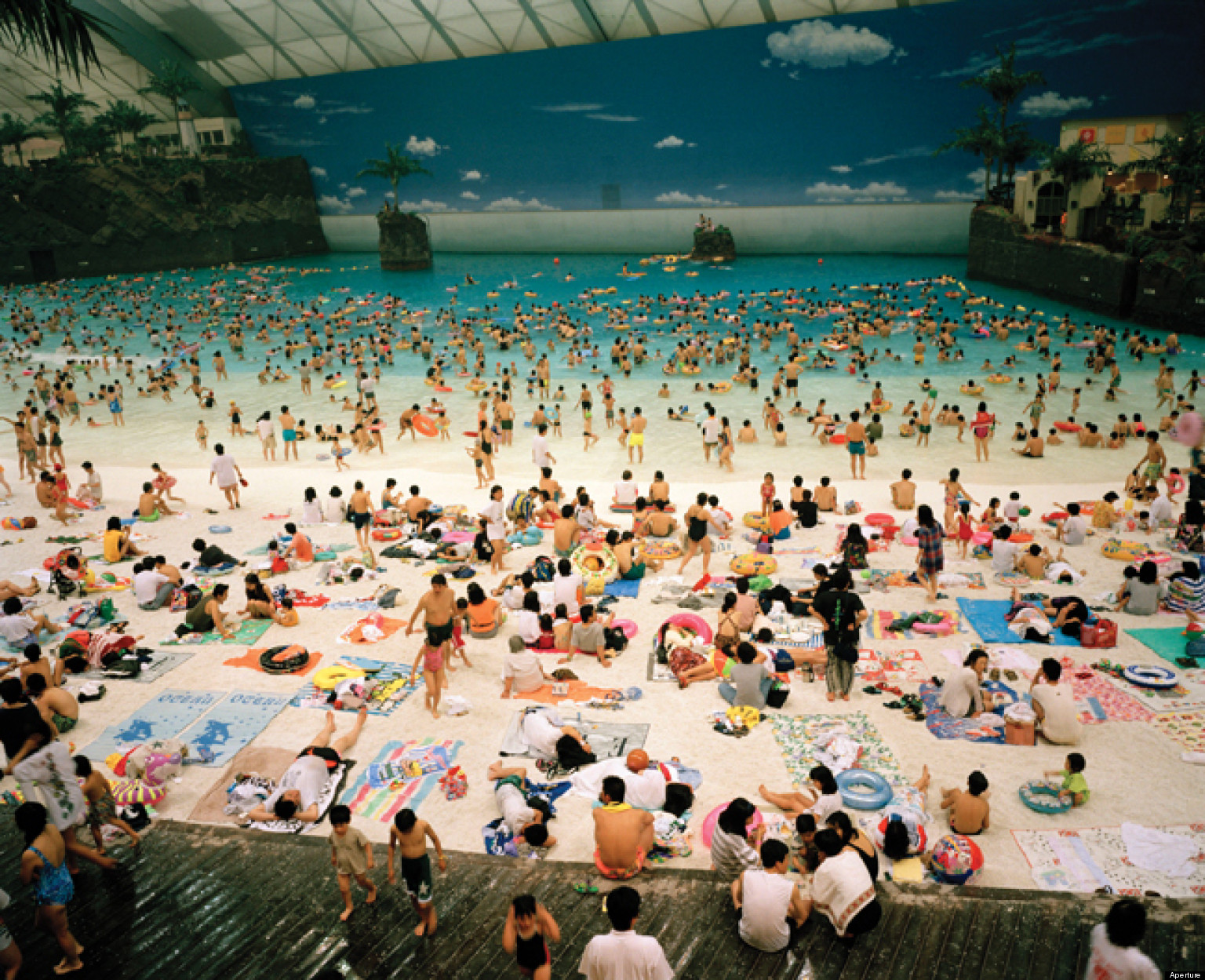
Martin Parr, Life's A Beach, Aperture, Image embedded via huffingtonpost.com
Manmade worlds remained one of Parr’s favorite subjects, and even today he likes to photograph people packed tightly together on the beach, each with their tiny speck of towel, and the garish food people stuff themselves with when on a supposedly relaxing holiday. He thus follows very much in the tradition of a fellow countryman who was far less well-known as an independent photographer, but who definitively shaped Martin Parr’s work – albeit as an elegant negative foil to Parr’s “in the thick of it” style:
John Hinde Butlin or simply John Hinde, born in 1916, was the postcard pioneer of Great Britain. His sumptuously glowing colors and fine image compositions made even the local indoor pool somehow appear glamorous and appealing. Hinde photographed a number of British holiday resorts and captured the desire – evident in the summer holidays that were gradually becoming a mass phenomenon – to use one’s hard-earned money for something different to normality, in an impressively graceful crystalized artificiality.

John Hinde Butlin, The Indoor Pool, Image embedded via info.sunspel.com
It was only in 2004 that a compilation of his most beautiful and whimsical images was published as a photo book. Highlights include a tiki-themed restaurant in which guests eat in a kind of walk-in Flintstone Family diorama, and a café with direct aquarium panorama of people bathing and diving. Hinde’s style was of course characterized by commercial interests, but behind the glossy façade an equally glossy promise was hidden, which he never exposed to ridicule.
From melancholy to absurd
With a more prosaic view, but no less emphatic for it, Frank Robert is virtually an expert on West European pleasure worlds: “Endstation Sehnsucht” (“Last stop: longing”) shows images from the Viennese Prater, the living proof that the fairground outside the city gates is not necessarily better preserved. Robert photographs from a polite distance a family dressed entirely in salmon or a diminutive older lady with an enormous stick of cotton candy, capturing amusement rides from the front and back, and he is even there when the Prater slowly falls back into hibernation over the colder months. Thus the photographer bridges the gap between a kind of social-documentary photography and stricter photography that is more formal in style, for which the book offers an appropriate framework with its unobtrusive layout and a double-page for each individual medium format.

It’s no secret that leisure facilities can appear a little melancholy or even downright absurd without any people. Someone with a particular talent for tracking down these sorts of scenarios is Stefano Cerio: Conceptually, the Italian photographer makes no distinction between explicitly evident artificial worlds and peripheral details, which likewise serve brief escapism.
Enticing nocturnal exploration
In “Chinese Fun” he photographs giant fruit bowls in the middle of nowhere in China, slide parks and absurd contraptions on the beach or in a housing complex – nowhere-places, captured in nothingness-weather in exquisitely depressing gray fog. The gap between claim and reality is supposed to gape open as widely as possible here, and is exploited with relish. At night, there is sometimes the opposite effect: Here the leisure parks that Cerio captures with a special flash technique in “Night Games” appear barely less grotesque, but at the same time alluring in the way they invite nocturnal exploration.

Stefano Cerio, Chinese Fun, Hatje Canz Verlag, 2017, Image embedded vía hatjecantz.de
Pamela Littky focuses on a very particular manifestation of artificial pleasure worlds: Traveling fairgrounds and rodeo shows offer their public a gateway to another dimension, but close it again after a certain time has elapsed. Littky photographs these temporary spaces in Kansas, Missouri or Mississippi, by roads, on dirt tracks and in fields. Places where, for a handful of dollars, you can have your photo taken with a real wolf, get a portion of candy or take a spin on the big wheel.
And thus the visit to the amusement rides and stalls actually represents a long-awaited highlight in the year for many people – fever in their eyes, radiating as bright as the popcorn stall in the twilight. For these motifs the contrasts, which are often twisted right to the limit – perhaps attributable in part to Littky’s work as a celebrity photographer – are actually entirely unwarranted.

Pamela Littky, American Fair, Kehrer Verlag, in Vorbereitung, Image embedded via pamelalittky.com

How Hip Hop sings about its dead
Death plays a large part in Hip Hop. The tragic early passing of legends such as Biggie Smalls and Tupac, not to mention rising superstars like...

5 questions for Mary Messhausen and proddy produzentin
With the performance "Thonk piece: Hungry for Stains", drag queens Mary Messhausen and proddy produzentin will open the exhibition COSIMA VON BONIN....

HIP HOP IS BLACK CULTURE – NOT THE OTHER WAY AROUND
Hip hop’s 50th birthday is an occasion for us to listen to some old records and mixed tapes and to look back at the most important hip hop films of...

Now at the SCHIRN:COSIMA VON BONIN
The SCHIRN is showing a unique presentation of new and well-known works by COSIMA VON BONIN until June 9.

You Get the Picture: On Movement and Substitution in the Work of Lena Henke
The artist LENA HENKE already exhibited in the SCHIRN Rotunda in 2017. What are the secrets of her practice and where can you find her art today?

SHALLOW LAKES – plumbing the depths
In the SCHIRN’s rotunda, MELIKE KARA is presenting a series of sculptures that are reminiscent of bodies of water or small lakes. So, what’s this...

When subculture becomes mainstream – a balancing act
Regardless of whether it is hip hop, techno, or the queer scene: It is not unusual for the aesthetics of countercultures and subcultures to morph into...

Now at the SCHIRN: THE CULTURE: HIP HOP AND CONTEMPORARY ART IN THE 21ST CENTURY
Coinciding with the 50th anniversary of the birth of hip hop, the SCHIRN dedicates a major interdisciplinary exhibition to hip hop’s profound...

Julia Feininger – Artist, Caricaturist, and Manager
Art historians can tell us a lot about LYONEL FEININGER, but who was Julia Feininger and what legacy did she bequeath to the world of art?

Lyonel Feininger and the Harvard Art Museums. Part 2
The Harvard Art Museums host the largest Lyonel Feininger collection in the world. The directors Lynette Roth and Laura Muir chat about Feininger’s...
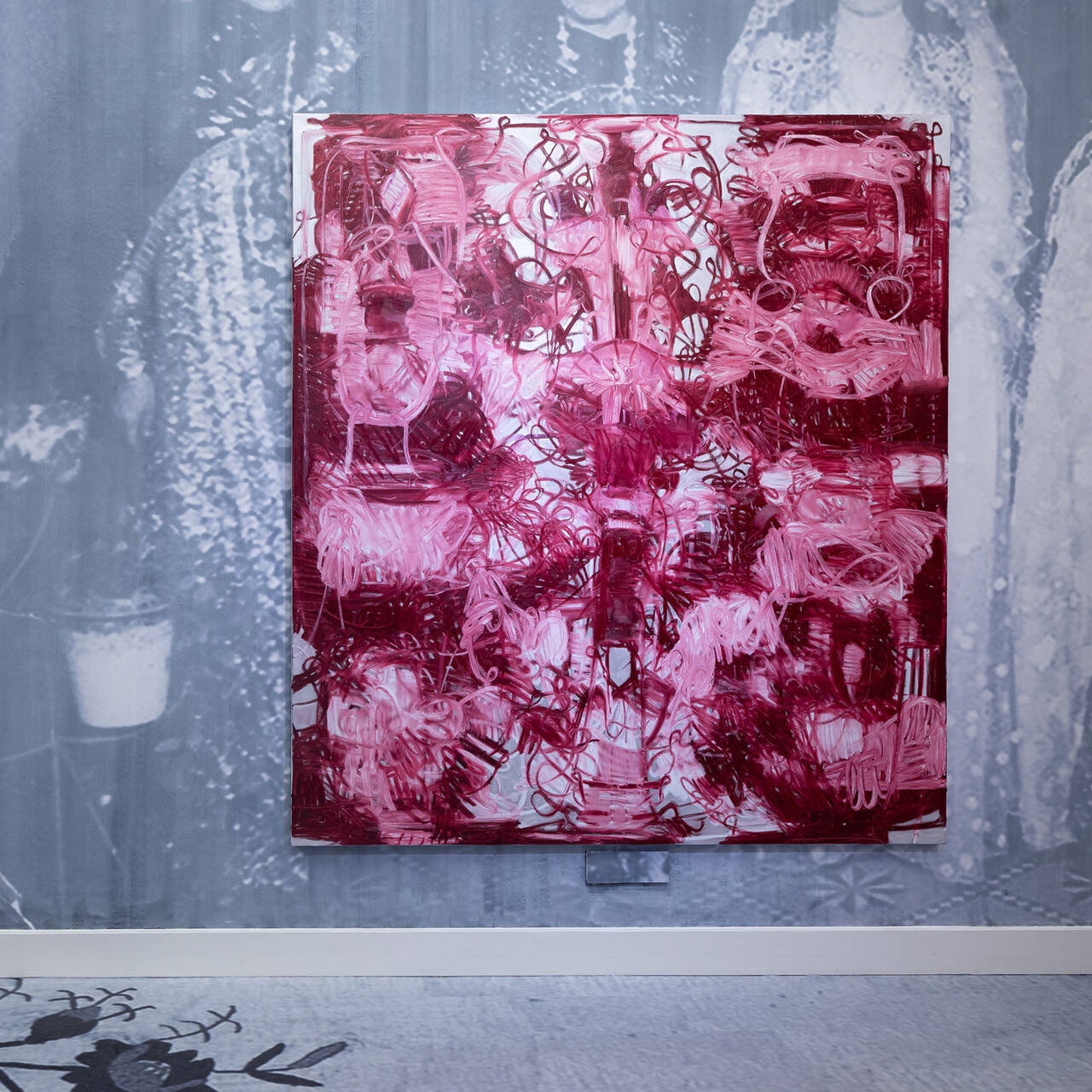
Five good reasons to view Melike Kara in the SCHIRN
From February 15, the SCHIRN presents a new site-specific installation by Melike Kara in its public rotunda. Here are five good reasons why it's worth...
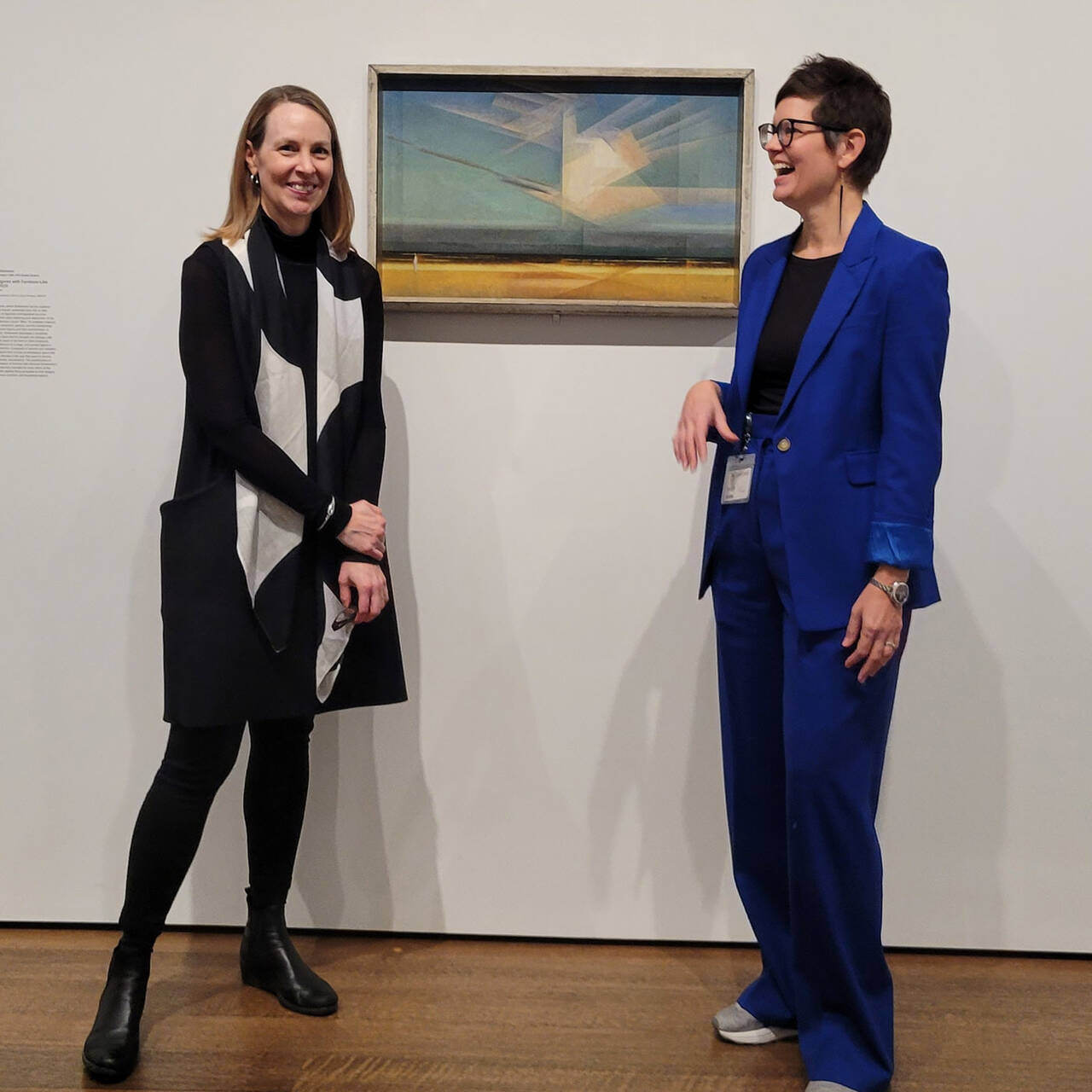
Lyonel Feininger and the Harvard Art Museums. Part 1
The Harvard Art Museums host the largest Lyonel Feininger collection in the world. How did that happen and how was the relationship between the artist...
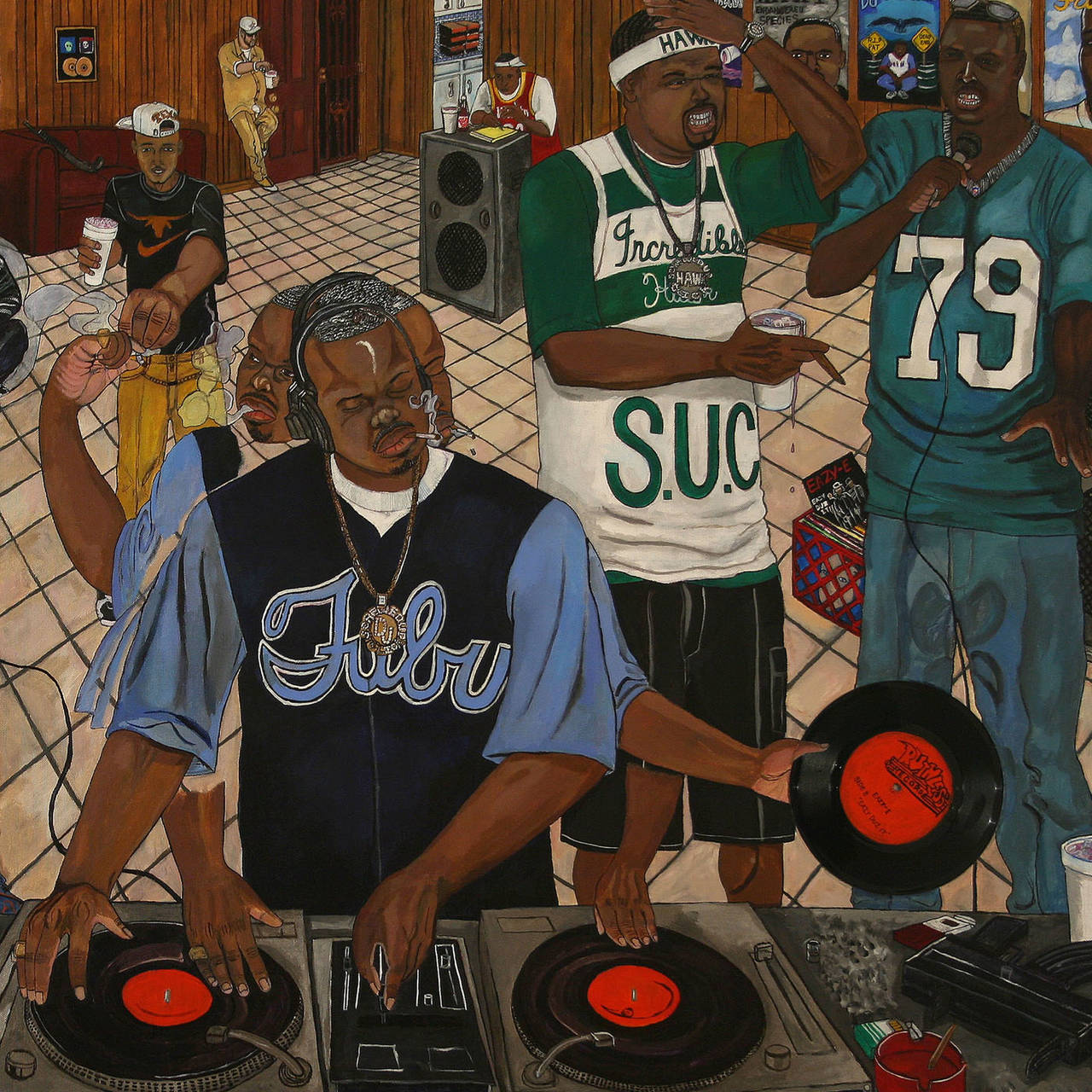
2024 AT THE SCHIRN
This is 2024 at the SCHIRN! From hip-hop and art in the 21st century, to Selma Selman, the self-proclaimed "most dangerous artist in the world", to...
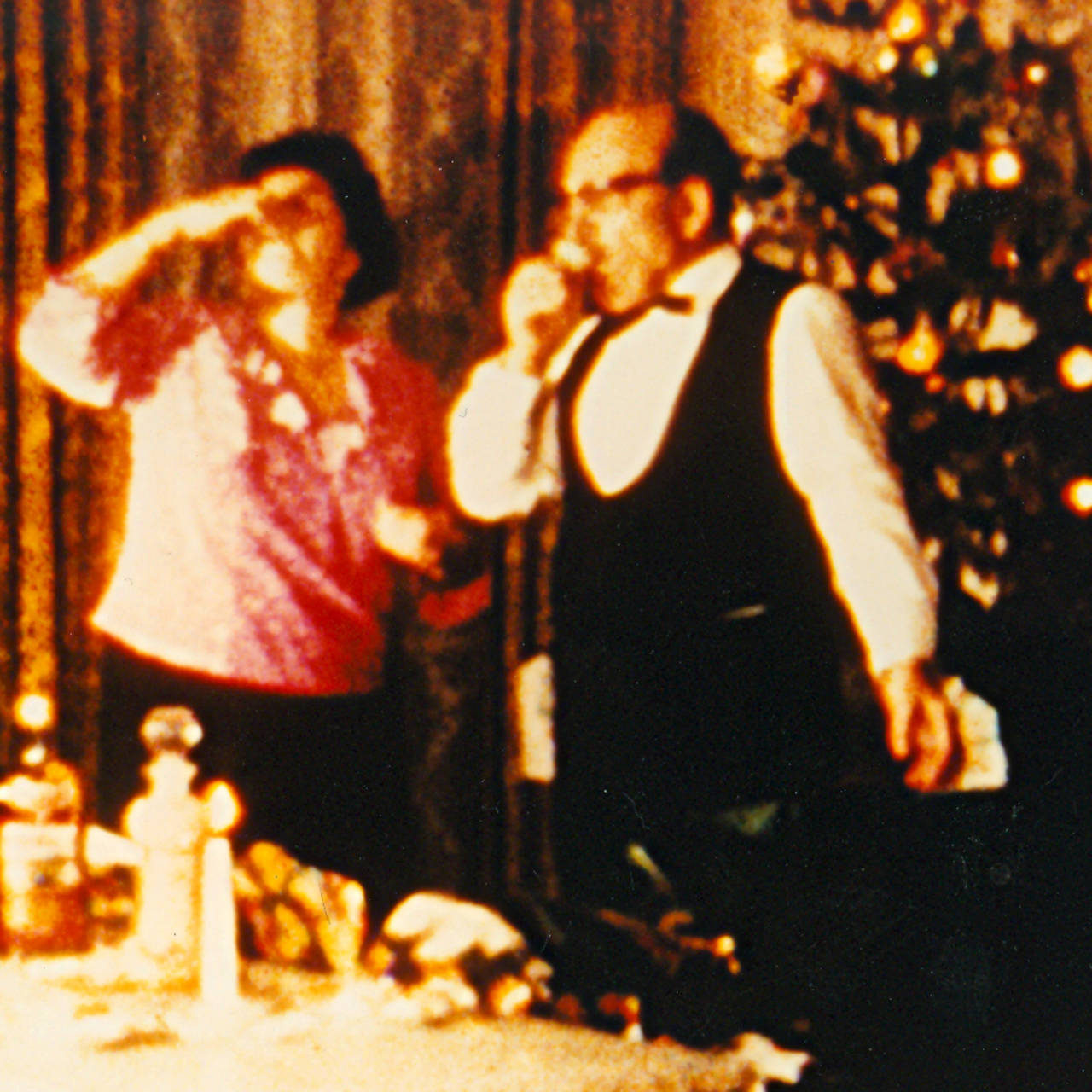
'Have yourself an experimental Christmas'
Bored of watching the same old Christmas films over and over again? Here are some of our favourite experimental films for the festive season.
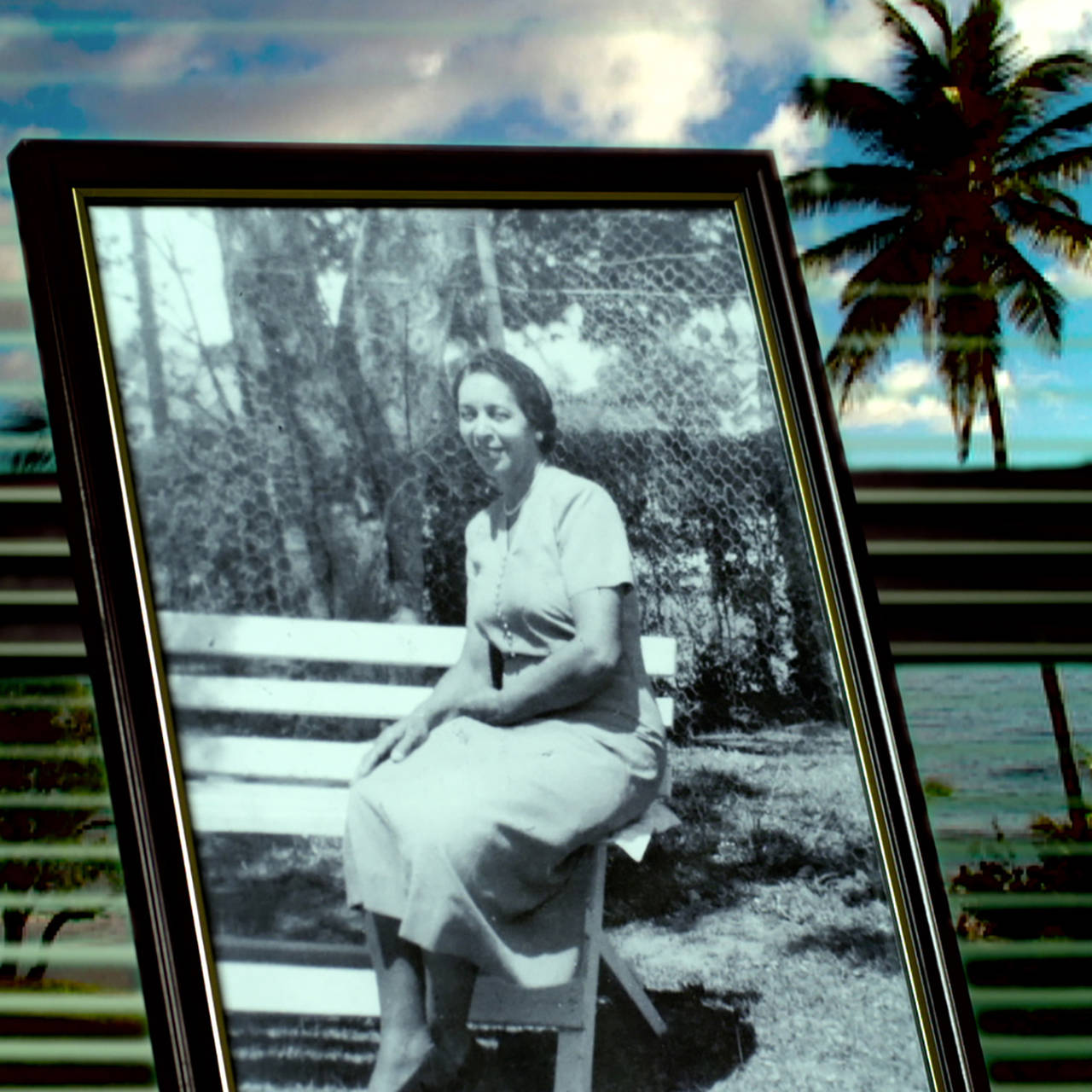
ROUTES, NOT ROOTS. JOHN AKOMFRAH, STUART HALL, AND THE BLACK AUDIO FILM COLLECTIVE
John Akomfrah’s video work “The Unfinished Conversation” is an homage to cultural theorist and sociologist Stuart Hall. Award-winning Frankfurt...